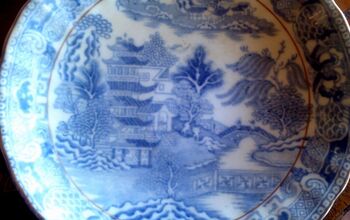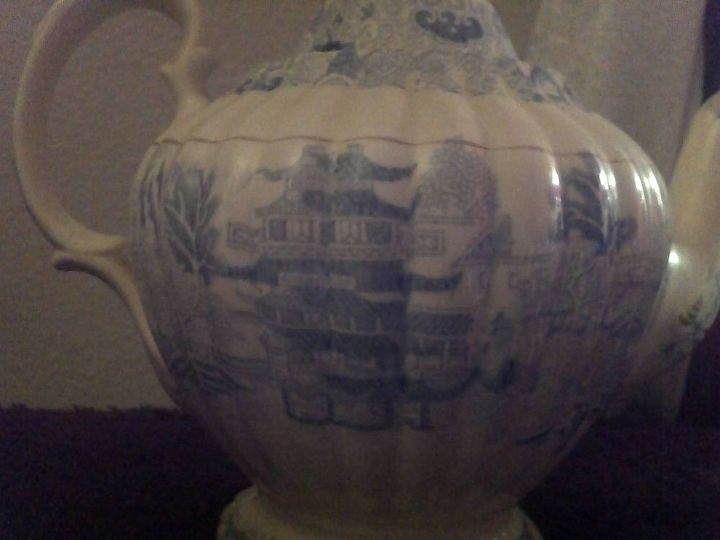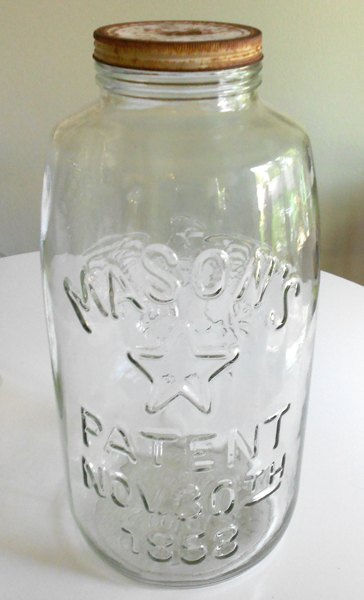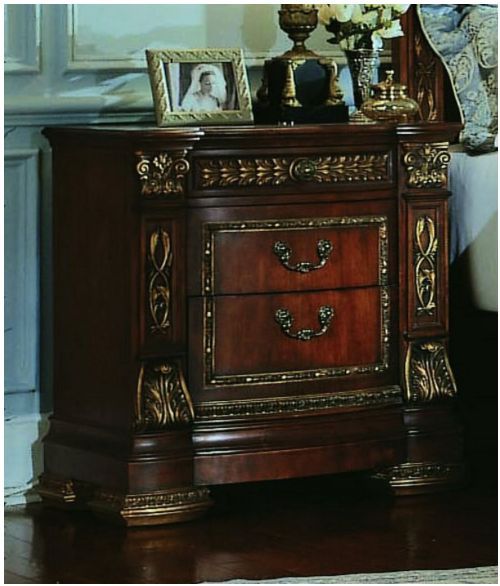Bone China

-
Look at replacements.com...that's how I found info about stuff from my mother in laws house. if that doesn't work, start with antique china..and look at pictures.
 Marilyn Scholl
on Jan 19, 2015
Helpful Reply
Marilyn Scholl
on Jan 19, 2015
Helpful Reply -
-
I believe this pattern is called "Blue Willow". Think it was made in London 1800's. Look for markings on bottom. If no marking and is rough, could be very old and made in Orient. Pattern should be very "crisp", not blurry,believe it is reproducton.
 Sue Collins
on Jan 19, 2015
Helpful Reply
Sue Collins
on Jan 19, 2015
Helpful Reply -
-
Thank you, there are no markings on the bottom, the pictures are not as clear as i would like.
 Monica
on Jan 19, 2015
Monica
on Jan 19, 2015


 Helpful Reply
Helpful Reply -
-
agree, look at antiques on web..lots made in the first/second ww time frame..Japan/Korea/China
 Marilyn Scholl
on Jan 20, 2015
Helpful Reply
Marilyn Scholl
on Jan 20, 2015
Helpful Reply -
-
You have a variant of the Blue Willow pattern, which is the oldest and most produced china pattern in the world (is still produced). Willow ware probably arrived on the scene about the late 1700s. It is a type of tableware that is called transferware because the design is transferred to the china blank, glazed then fired. In the beginning, a myriad of countries produced willow wares. Unfortunately, today, only a handful of makers still exist. There are a couple in the U.S., some in England and, perhaps, one still in Holland. Japan also produced willow ware china but, for some reason, it's not as sought after as that from the U.S. or Europe. The china always has a white background with either blue (most often seen), green, reddish (brown-like) and a paler almost pink tone. There is also a transfer called "gaudy," which incorporates several vibrant colors all at the same time. The transfers can vary from very crisp and clear to a bit muddy(blurry) which is purely the character of the maker. Johnson Brothers in England produces some of the clearest, crispest pieces of Blue Willow I have ever seen. Your piece doesn't seem to have any marks but, from looking at your pictures, there is a possibility that it was made in Europe, guessing likely in England. The shape of the pot is somewhat English in character. You don't give any history of your pieces so we don't have any other information to help with identifying it further. If you want to read a very, very sweet story, check out the legend of Blue Willow here: http://www.angelfire.com/biz/starfire27/Legend.html.
 Swan Road Designs
on Jan 20, 2015
Helpful Reply
Swan Road Designs
on Jan 20, 2015
Helpful Reply- See 1 previous
-
Related Discussions
Blackout curtains behind vertical blinds
I have two 6' patio doors, and I want to add blackout curtains to keep the sun/cold out. What is the best way to hang them, and what can I use to push the curtains ba... See more
How to make a balloon garland?
Does anyone know how to make a balloon garland or a balloon arch?
Does anyone know what this is?
Just turn them upside down and open them, then insert a roll of paper towel and tada, you have yourself a brand new paper towel holder that is not only beautiful, but... See more
Can anyone identify this vintage wooden crank box?
The item is solid wood, standing aprx. 26" high x 16" wide, no exterior holes or outlets, side crank handle turns four wooden paddles inside with various size holes o... See more
What to put in this huge mason jar?
I have a HUGE mason jar. I would like some ideas on what to put in it for decorations, other than flowers.
How can I find discontinued Pulaski or Neiman Marcus/Horchow furniture
I am looking for the discontinued Pulaski Royale collection nightstand, Neiman Marcus/Horchow also sold it, but called it the Royalty collection. I have looked all ov... See more
Ideas on different things I can do with these yummy old spools?
I'm a picker and came across lots and lots of these beauties. I took home several boxes of these purdies and are using for different projects. However, I want to find... See more








